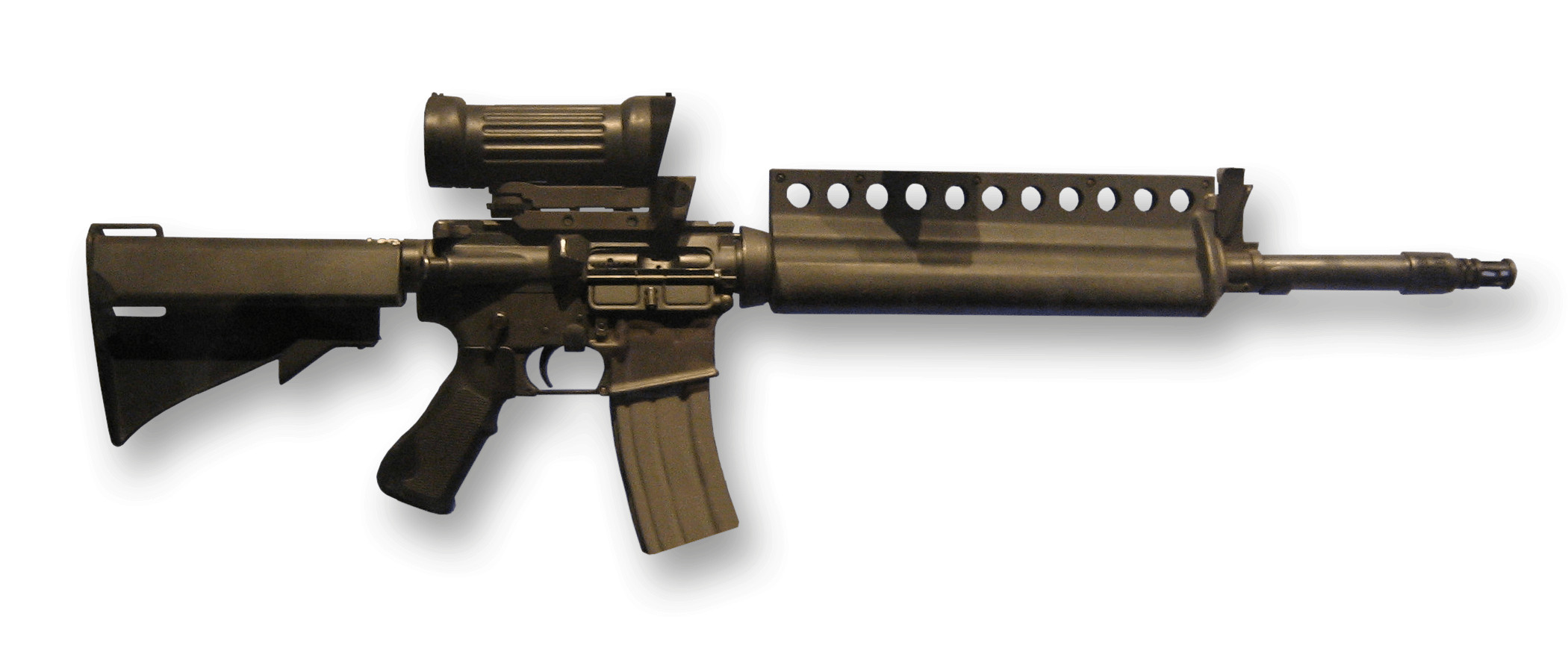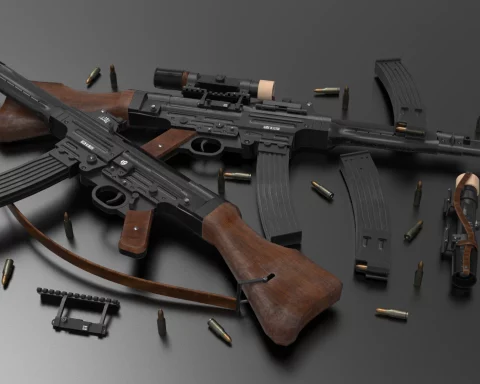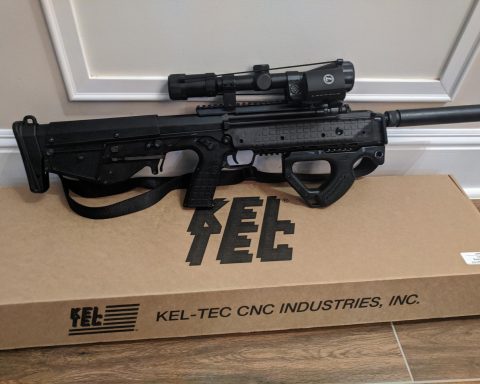The Colt ACR was Colt’s entrant for the Advanced Combat Rifle program. It was quite simply, a progressive improvement upon their existing M16A2 service rifle, but designed to fire a new duplex cartridge carrying two bullets instead of the usual one; it can also fire the standard 5.56 mm cartridge, and this is recommended for long-range shooting.
The U.S. Army Advanced Combat Rifle program tested four different weapons systems. In 1989, four candidate weapons were tested, from Heckler & Koch of Germany, Colt and the AAI Corporation of the United States, and Steyr-Mannlicher of Austria.
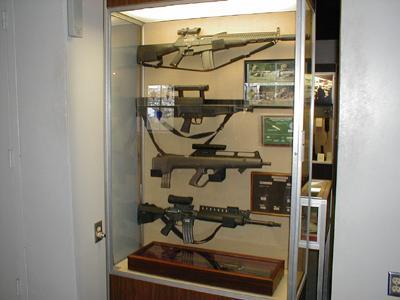
Duplex ammunition
For ranges up to 325 meters, the Duplex round gives a higher chance of a hit; the theory is that the leading bullet goes where it is aimed, but the second bullet has a slightly random dispersion about the point of aim which is intended to compensate for any human error. Or, in plain words, if you miss with the aimed shot, you might get lucky with the random one. This idea was tested in the 1960s, and Duplex ammunition was used in Vietnam with some success. As with flechette ammunition, the past 30 years have seen some design improvements so that one can now expect better performance.
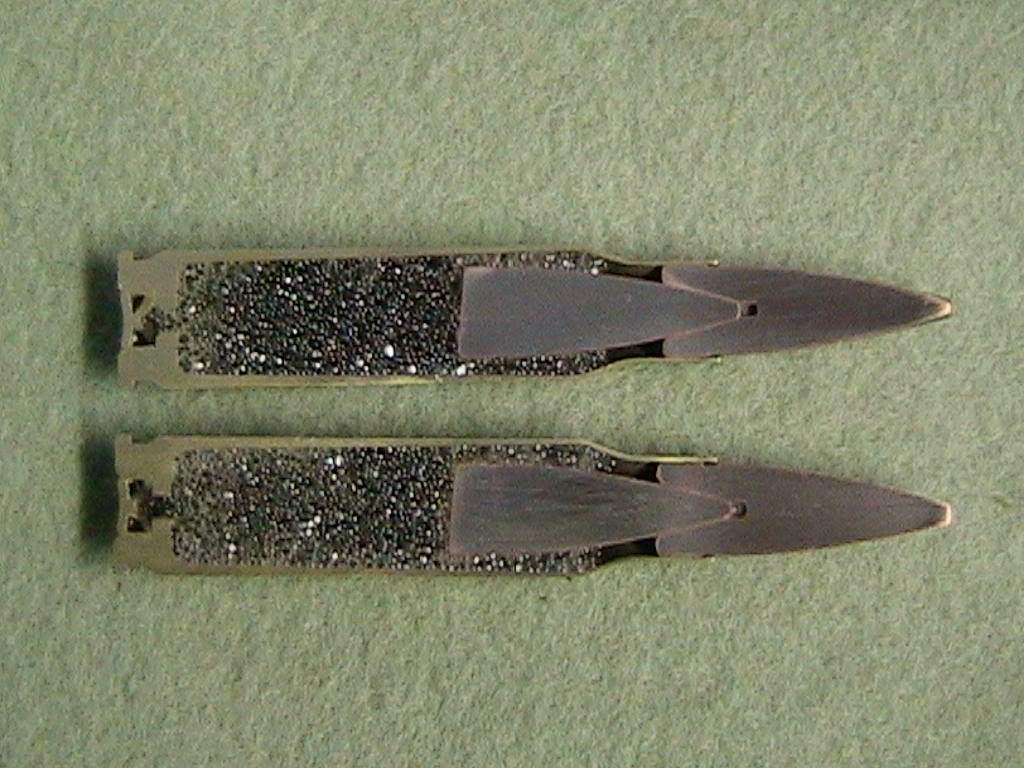
The aim of the duplex round was to increase the probability of a hit by firing two projectiles at once, one 35-grain bullet which would follow the aimed trajectory and the other 33-grain slug which would hit (randomly!) within a small radius. If your aimed shot missed, it gave you another chance.
Of course, it comes at a price: you’re firing two small bullets instead of one big one. So even if you hit with the main bullet, you do much less damage than you would with one big 65-grain bullet. This is not such a big deal with assault rifles where the important thing is scoring hits – remember, on average it takes something like 20,000 rounds for each casualty inflicted.
Design
The Colt ACR is gas-operated and uses exactly the same rotating bolt system as the M16A2. The handguard, pistol grip and buttstock have all been redesigned to improve handling, and the handguard incorporates a top rib which allows instinctive shooting in a manner similar to handling a shotgun.
The barrel is fitted with a very advanced muzzle brake/compensator which, together with a new oil-spring buffer in the receiver, reduces recoil to about 40 percent of that of a standard M16A2 rifle. The firing mechanism permits single shots and full automatic fire, but there is no three-round burst facility.

A 3.5-power optical sight is provided, and two-range flip iron sights are fitted. The U.S. Army tests showed that the Colt ACR improved upon the Colt M16A2, but not sufficiently to make it worthwhile contemplating a complete change of equipment.
The Colt ACR was not a total loss, however; the scope went on to be offered by Elcan, a version of which was eventually adopted as the M145 Machine Gun Optic used on a number of firearms, especially those from Diemaco (now Colt Canada).
Technical specifications: Colt ACR
| Manufacturer: | Colt’s Manufacturing LLC, Hartford, CT, United States |
| Designed: | 1982 |
| Produced: | the project never got to serial production |
| Type: | gas-operated, selective fire |
| Caliber: | 5.56 mm (.223), Duplex |
| Overall length: | 1,031 mm (40.6 in) (Stock extended) |
| Weight (empty): | 7.28 lbs (3.306 kg) |
| Effective firing range: | 325 m (355 yds) (Duplex Ammunition) |
| Magazine capacity: | 30-round detachable box magazine |
